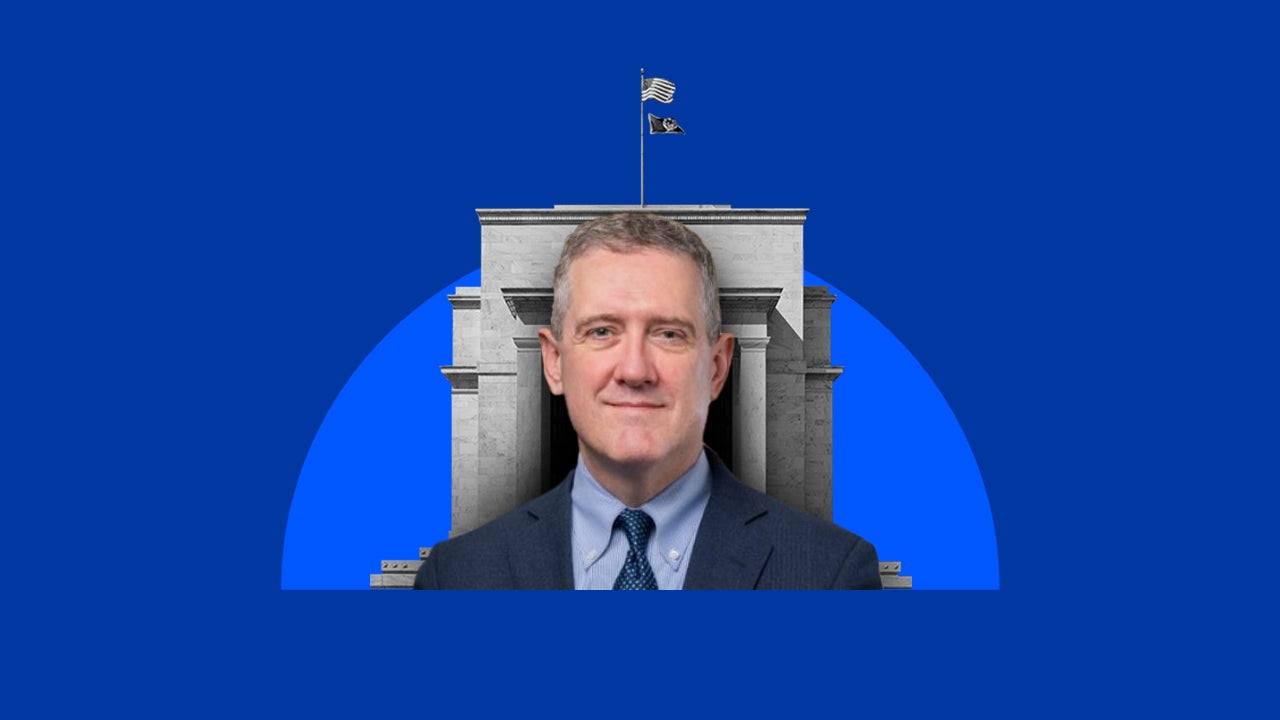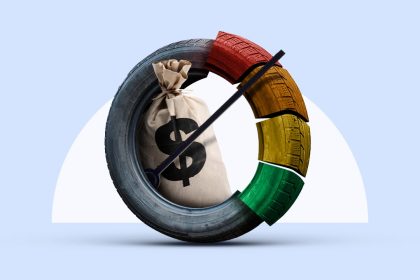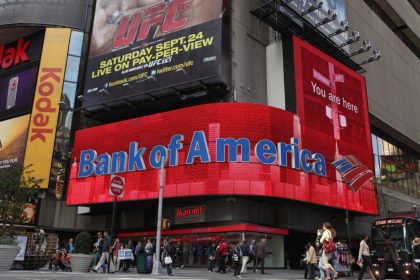Less than a week after President Donald Trump shocked the world with his massive “Liberation Day” tariff hikes, the former president of the St. Louis Fed, Jim Bullard, uttered a word on television that most economists reserve for their nightmares: Smoot-Hawley.
Pilloried as one of the most “catastrophic” pieces of legislation in the annals of Congress, the Smoot-Hawley Act of 1930 was a protectionist trade policy that lifted tariffs on thousands of U.S. imports, igniting a global trade war that historians now say exacerbated the Great Depression. (Outside of economists’ inner circles, though, you might only know the term “Smoot-Hawley” because of Ben Stein’s deadpan character in the 1986 classic “Ferris Bueler’s Day Off.”)
Speaking to national television outlets, Bullard warned that Trump’s tariffs “significantly raised the risk” of another “Smoot-Hawley”-like outcome.
“Other countries did not react by coming in and negotiating,” Bullard said in an exclusive interview with Bankrate, further elaborating on what he meant by the quote that grabbed headlines. “They came in and raised their tariffs, and then you got this collapse of global trade in 1930-1931. That contributed heavily to the Great Depression, so we don’t want to get to that. No one’s shooting for that, but that is one of the outcomes of the game.”
Since then, those “reciprocal” tariffs — which analysts now say were calculated by factoring in each country’s trade deficit with the U.S. — have been paused for 90 days. Those moves have made Bullard more optimistic that the Trump administration can reach a trade deal before any irreparable damage to the U.S. economy.
“But they have to get on with it,” he added. The White House has also now lowered tariffs on goods from China to 30 percent for another 90 days as the two nations press forward with negotiations to eliminate what Trump describes as “trade barriers.”
Bullard, now the dean of the Daniels School of Business at Purdue University, sat down with Bankrate on April 28 to discuss the state of the U.S. economy, tariffs and inflation. His former colleagues on the Federal Open Market Committee (FOMC) were on the precipice of announcing at their May rate-setting meeting that they were in no rush to cut borrowing costs despite rising fears of a U.S. recession and plummeting consumer sentiment. Fed policymakers also warned in their post-meeting statement that both unemployment and inflation could soon increase — code for “stagflation.” Fed Chair Jerome Powell expressed that fears of tariffs leading to another inflationary spiral similar to the coronavirus pandemic were one of the reasons policymakers couldn’t come to the rescue of these early warning signs of distress.
Bullard, however, has a different point of view on tariffs, one that he’d try to express to his colleagues if he were still on the rate-setting committee.
The inflation narrative around this is a little bit overplayed. We should think more in terms of the slowdown or even recessionary possibilities.
— Jim Bullard, former president of the St. Louis Fed
Bankrate’s conversation with Jim Bullard about recession risks, tariffs and inflation
Our Q&A with Bullard has been edited for length.
When you mentioned that these “reciprocal” tariffs could lead to a “Smoot-Hawley”-type outcome for the U.S. economy, what did you mean?
“That both countries just keep very high tariffs, and then, there isn’t any trade between the countries — or at least, only in certain goods. The tariffs are just too high for either side to sell any goods in the other country.”
“If a tariff goes from 5 percent to 7 percent, that’s one thing that would affect markets and would be something that you have to take into account. But if a tariff goes from 5 percent to 500 percent, that’s basically the same as saying you can’t send that good to my country, and you won’t be able to sell it here.”
“Almost all goods have reasonably close substitutes. So if you’re trying to sell your good in the other market, and now you have to raise your price by 100% or something, you’re not going to be able to sell anything at that price. You were already at the price that you thought was the competitive price for you or the best price for you to make money in that market. You’re not going to be able to make money at all; it’s going to be a prohibitive tariff.
“Sometimes this gets mixed up a little bit: Small changes in tariffs would just change demand around a little bit in that particular market, but very large changes are tantamount to a follow-up trade restriction of that particular good.”
Fed officials are warning that tariffs could raise both inflation and unemployment. Which do you think will come first: higher inflation or higher unemployment and weaker hiring?
“My lesson comes from the 2018-2019 trade war. There, we saw a slowdown in the U.S. economy, mostly based on uncertainty about what the U.S.-China relationship was going to be. By the time you got to the summer of 2019, that became palpable in the actual data, and the Fed ended up lowering the policy rate at that time to try to compensate for the slowdown. I didn’t really see much in the way of inflation at that time. Inflation — core PCE [personal consumption expenditures] on a year-over-year basis — declined in the first half of 2019. It didn’t go up.”
“Uncertainty about the rules of the game can inhibit investment, and that slows down the global economy and the U.S. economy. The price effects are much more muted than most people are talking about because you can’t just go into a market and say, ‘All of a sudden, I’m just going to charge more for my product’ and not expect your demand to fall off. With high tariffs, you’re not going to have any demand at all for your product.”
If you were still at the Fed, what would you say to your colleagues as they debate which side to be more focused on?
“That, most likely, the effects are [going to be] on the real economy, so you have to watch out for that if you’re at the Fed. I do think the committee is in a good position [with interest rates]. If it plays out like it did in 2019, they could lower the policy rate sometime in the meetings ahead. I don’t think it [rate cuts] would be imminent here, but if that [slowdown] actually comes to pass and shows up in the data, then they could make cuts to the policy rate to help mitigate that.”
“And on the inflation side, it’s true that inflation remains above target and that the committee would like to see inflation continue to come down to target. But the most recent inflation report was encouraging, with more muted inflation readings. And if that continues through the spring here, then they’d be much closer to 2%.”
“But the general thought in my mind would be that slower growth in the economy is usually a little bit correlated with some lower inflation outcomes. So you won’t get quite as much inflation as you would have otherwise expected.”
It sounds like inflation isn’t a primary concern of yours at all.
“I’ve been pushing back against this inflation narrative around tariffs. That isn’t what we saw in 2018, 2019. Inflation actually declined in the first half of 2019, which is kind of the height of the trade war at the time. Instead, what you saw is a pullback in global investment, a pullback in global growth, and by extension, U.S. growth.”
“When you think about it, the middle of a trade war is probably not the best time to try to raise the price for your product. Most executives would try to hang tight and keep it where it was until you got resolution about the uncertainty, because if you raise your price too aggressively and then the trade war goes away, you’ve lost some customers and the cost of customer acquisition is very high. They don’t want to have to reacquire customers that they might lose in the middle of a trade war by raising their price too much.”
Powell mentioned that, despite souring consumer sentiment, the “hard” data (economic growth, jobs, consumer spending, the unemployment rate, etc.) is still looking strong. But given your concerns about tariffs impacting the economy, what do you think about the idea that we could be in a recession right now?
“There’s a lot of front-running of tariffs [by businesses trying to get ahead of tariffs and placing orders for goods ahead of schedule], so you got a lot of imports, and it looks like there was a direct effect on first quarter GDP through that channel.” (The broadest measure of U.S. economic growth — gross domestic product, or GDP — contracted in the first three months of 2025.)
“Labor markets seem to be holding up very well. I don’t think you could make the case that we’re in a recession right now, but most of the concern here is about how this will play out in the second quarter and third quarter and through the end of the year. We’ll just have to wait and see how the whole trade war continues through that process.”
How long do you think the Fed’s interest rate cuts might be on hold?
“To me, it looks like at least until the second half of the year. A lot of it depends on exactly how the trade war plays out. A lot of this is done through threats and counter-threats by countries involved. Kind of the nature of the game is that, neither side wants to totally commit until you’ve got a deal. That will affect the global macroeconomy and the U.S. macroeconomy for the months to come — unless you can get some deals signed and reduce some of the uncertainty and that will free up big investment decisions across the globe to go ahead.”
“What you really need is agreements in principle. You probably don’t need all the details. The details can be figured out later. I think you could reach a deal pretty quickly with many of these different countries, but they have to get on with it.”
Read the full article here





